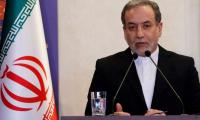LAHORE: If the deadly Coronavirus, which has already spread to 73 more countries apart from China, prolongs to the sheer dismay of Saudi Arabia, the oil-rich kingdom may lose about $12 billion of its annual GDP, which is equivalent to country’s 20 per cent non-oil GDP and seven percent of its total GDP, an eminent Turkish media house "TRT World" and a renowned American website have reported.
This estimate pertaining to $12 billion annual Hajj and Umrah revenues, equivalent to over Pakistani Rupees 1,850 billion, was first given by an American financial and business news website called the "Business Insider," which had reveled in its report that 2,21,000 Indonesians, 179,210 Pakistanis, 170,000 Indians 127, 198 Bangladeshi and 108,000 Egyptians had performed Hajj during 2017.
This website had held: "For those using a tourist visa, which was launched in September 2019, Saudi officials are only restricting travel from 26 countries hit particularly hard. It suggests a reluctance to disrupt the nascent tourism industry, which is being championed by Crown Prince Mohammed bin Salman, who hopes it will make up 10 per cent of Saudi GDP by 2030. Hajj and Umrah, the two main Islamic pilgrimages, are already worth $12 billion a year to Saudi Arabia."
It is imperative to note that the 88-year old Kingdom of Saudi Arabia relies on oil revenues for 87 percent of its budget, and oil related industries account for 42 percent of its GDP.
Turkish media outlet, "TRT World," has said: "Saudi Arabia hopes that well off visitors will be willing to pay thousands of dollars per night to stay in recently constructed hotels’ suites, which include views of the Kaaba. About 43 percent of Umrah prayers visit Saudi Arabia in the Islamic months of Rajab, Shaban and Ramadan, which makes these three months the most popular time for pilgrimages outside of the Hajj."
The "TRT World," a Turkish state international news channel broadcast 24-hours per day in English, has further reported: "In the Hijri year of 1439, which was between 2017 and 2018, more than 6.7 million Muslims had visited the country for the Umrah.
The decision to suspend entry for foreign pilgrims in the wake of the Coronavirus outbreak could hurt Saudi finances if it is a prolonged ban."
This Istanbul-based news channel has gone on to state: "Saudi Arabia has banned the entry of foreign pilgrims into the country as the world tries to contain the global outbreak of the Coronavirus. The decision comes as the illness establishes a foothold in Europe and the Middle East, with Italy and Iran in particular affected. While Riyadh has issued no information about how long the ban will last, a global pandemic could impact pilgrimages during Ramadan, which is only a couple of months away, and the Hajj pilgrimage that follows soon after."
The "TRT World" maintained: "The ban applies to the Islam’s holiest city of Mecca and also its second holiest city of Medina. While the overwhelming majority of Saudi Arabia’s wealth comes from its fossil fuel deposits, pilgrimages by Muslims are also a significant contributor to its economy.
The Saudi decision to suspend entry for foreign pilgrims coincides with the Islamic date of Rajab 3. Besides the direct monetary benefit that pilgrims bring, more than half a million people are employed in the tourism industry in Saudi Arabia, which is overwhelmingly religiously oriented."
This development is certainly a major blow to Saudi Arabia’s non-oil revenues of one takes into account the country’s plans to pocket $150 billion Hajj and Umrah revenues by 2022.
In August 2017, the "Arab News," a Riyadh-based English-language daily newspaper, had quoted a concerned Saudi official as saying: "Hajj and Umrah revenues are poised to exceed $150 billion by 2022 in light of the expected mergers of economic blocs and groupings to meet the growing demand on Hajj and Umrah economics in terms of transport, commercial stores and expansion in small, medium enterprises. the announced plan to host 30 million pilgrims and Umrah performers by 2030 is a real mirror of plans to bring markets in Makkah and Madinah out of disorganization and put them into well-organized economic frameworks serving changing economic mechanisms that attract high returns estimated at billions of dollars annually."
Research conducted by the "Jang Group and Geo Television Network" shows that in 2015, two million Muslims had performed Hajj, and in 2016 and 2017, the number had rested at 1.8 million and 2.4 million respectively. Remember, Saudi Arabia has more than $34 trillion worth of natural resources. With reported profits topping $111 billion in 2018, "Saudi Aramco" is believed to be the most profitable company in the world.
The country has the largest dairy farm in the world, as approximately 95,000 milking cows are kept there, and the dairy produces nearly 1 billion liters of milk each day. One of Saudi Arabia's oil fields has enough oil to fill 4.77 million Olympic swimming pools.
Saudi Arabia has a population of 33 million people and employs about 6 million foreign workers, which thereby means that on any given day; more than 15 per cent of the people living in Saudi Arabia are foreign nationals.
Senator Dost Muhammad seen in this image. — Facebook@Senator Dost Muhammad Mehsud/FileTANK: Senator Dost Muhammad...
The artists present Jhomar dance on the beat of the drum in relation to the Punjab Culture Day at the Arts Council....
Alumni of the Peshawar Model School pose for a group photo at an Alumni Reunion Ceremony on April 14, 2025. —...
PTI activists and supporters of former prime minister Imran Khan, clash with police during a protest against the...
This image shows people destroying a poppy plantation. — AFP/FileKHAAR: Poppy crops grown over 60 kanals of land...
Afghan refugees gather for biometric verifications from the National Database and Registration Authority at a holding...







